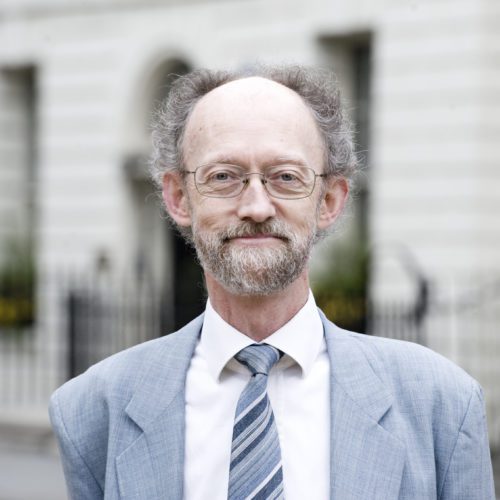At the Ottoline Club: The Law of Everything
What do language, cities and war have in common? An intriguingly constant pattern governs them.
The Ottoline Club met on 19th October 2020 to hear a talk by Sebastian Ille, Senior Lecturer in Economics at Northeastern University London.
As the first speaker of the new academic year, Sebastian introduced us to what was in some ways a dream topic for an interdisciplinary discussion club. In the course of research for his book on how individuals interact and institutions evolve, he had come across a particular mathematical pattern which he then discovered is to be seen in numerous different disciplines. In his talk he described this pattern, scrupulously giving illustrations of its occurrence in many of our Northeastern University London disciplines, from Art History to Law, and went on to offer an explanation of its apparent ubiquity.
What is this pattern? It is a regularity in, for instance, the relative frequencies of different-sized occurrences of a given phenomenon, such as social conflicts with larger or smaller numbers of casualties. More generally, it is a regularity in the scores, on some measure, of different members of a given set: another of Sebastian’s examples was of how individual members of a social network differ in respect of the number of other members they have direct links to, some standing in few unmediated connections while others stand in very many. Sebastian showed that again and again in such comparisons we find a ‘power law’ distribution: we find, that is to say, that larger and smaller eruptions of violence, for example, tend reliably to differ in frequency – the large ones being rare, the small ones commonplace – in a fashion which when plotted on a log-log scale proves to be linear. This is a remarkable and suggestive uniformity, Sebastian argued. It is remarkable because the power law distribution is so unlike the bell-shaped ‘normal distribution’ curve that represents the distribution of so many other variables, such as, for one example, intelligence. And Sebastian had some suggestions to offer as to what lies behind it.
In a social network, the power law distribution of participants’ degrees of direct connectedness is an instance of the ‘Matthew effect’ (named after the evangelist), by which ‘to every one who has, more will be given’. The sizes of cities also display this effect, in accordance with a model of preferential attachment: an algorithm similar to one used for social networks’ evolution turns out to deliver something like the actual distribution of city sizes. As for social conflicts, Sebastian showed us simulations of trends in house-moving and of cascades in accumulating sandpiles which exhibited the same pattern in respect of the size of upheavals. He proposed that the underlying factor in most of these cases was that actions were associated with large-scale externalities: individuals’ choices altered the stakes for other individuals, with ramifying consequences.
If not quite ‘the law of everything’, then, Sebastian was claiming to discern a law of, at least, very many different kinds of thing. In the discussion, he agreed with Alexandros that the ‘small world’ phenomenon illustrated by Milgram’s letter-passing experiment can be explained in terms of preferential attachment.
In the case of house-moving, it turns out that small tweaks to the algorithm employed can affect whether the power law distribution emerges; Mike pointed out that these could quite plausibly track whether the algorithm captures the sort of information that people tend in fact to be able to obtain about neighbourhoods. Sebastian also acknowledged some cases, such as the frequency of use of ambiguous words, where the power law distribution may have other causes, but he was able to expand upon his hypothesis in response to a question of Catherine’s about communism: in market economies, he said, the size of companies conforms to the power law pattern, but this depends on decentralised production decisions, so that the same is not to be expected in command economies.
The externalities arising from decentralised decisions make for strong feedback effects, with the result that exclusively individual-focused models are as inadequate as exclusively aggregate-focused ones. Sebastian replied to a question of Sara’s, about self-organising systems, that he had not found in the political science literature any analytical models that looked like being sufficiently sensitive to such feedback effects. He concluded by encouraging colleagues to join in the effort to develop appropriately multi-level models of how social systems behave.
Those attending were: Sebastian Ille, Sabina Crowe, Ursula Smartt, Sebastian Lewis (Faculty of Law), Charlotte Grant, Peter Maber, Catherine Brown (Faculty of English), Anthony Grayling (Master), Sara Raimondi, Callum Barrell (Faculty of Politics & International Relations), Michael Peplar (Faculty of History), and Alexandros Koliousis, Naomi Goulder, Dimitris Mylonas, Gulzaar Barn and David Mitchell (Faculty of Philosophy).

